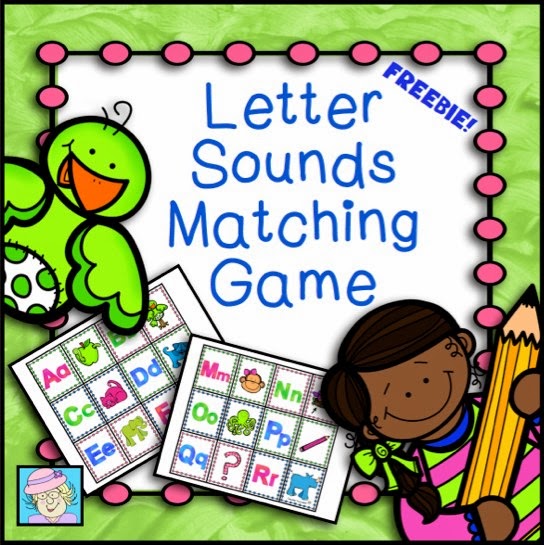I have created this series of posts to answer a few questions I have received recently regarding beginning reading instruction. I really enjoy teaching little ones to read. It's one of my favorite things about teaching. This series is intended to break beginning reading instruction into 5 steps, starting with letter sounds.
In my classroom and with my littles at home, I teach beginning reading using phonics. Knowing the sounds letters make is an essential skill for decoding new words. Of course, some words cannot be "sounded out" and must be learned by sight, but more about that in a future post . . .
The very first thing I teach my beginning readers is the most frequent sound each consonant makes. These frequent sounds are the ones found in most 3-letter words. Some examples would be "G" as in gorilla (not giraffe), "X" at the end of fox (not xylophone, which is actually a "Z" sound), and "C" as in cat (not city). When I send materials home, I always include a list of the most frequent sounds and/or an answer key. This makes it easier for those who might not have learned to read using phonics.
As for the vowels, I teach the short vowel sounds first for the same reason. Most 3-letter words have short vowel sounds. That would mean "A" as in apple, "E" as in elephant, "I" as in igloo, "O" as in octopus, and "U" as in umbrella. While the Common Core Standards require that we teach long vowels, I usually wait until later in the year to teach those. Otherwise, I find that students are often confused if both sounds are presented together. I have found that learning to read goes more smoothly if students learn the letter sounds, learn to merge letters to read 3-letter words, practice reading CVC words and sight words, THEN learn long vowel sounds.
I use various methods to teach vowel sounds. In the picture above, my son is using a set of letter sound puzzle cards. I love these because they allow the child to "self check." If the answer is wrong, the pieces don't fit! Click on the picture below to take a look at this set.
Click on the picture to see this on Teachers Notebook.
When students are just learning their sounds, I only present (at most) 3 or 4 letter/picture matches at a time. I also use sets where students match more than one picture to a sound and these work very well with beginning readers. As students progress and know more sounds, I prepare a literacy center activity using 10-15 of the puzzle sets. The goal of these activities is for children to not only learn the sound of each letter, but also for them to tie the sound to a word. This allows them to make the connection between letter sounds and how letters form words.
More Activities to Help Children Learn Letter Sounds
1. Help your student/child learn the first letters in the names of loved ones and friends. Children LOVE this!
2. At home, I love to teach letters during bath time! You can cheaply purchase a set of foam bath letters/numbers. These are valuable for learning letter sounds, writing names, spelling and reading words, AND doing math!
3. Games! We play a game in the car where we take turns naming things that start with a specific letter. This is great for sound to word matching as well as vocabulary development! You'll be surprised to hear the words your child uses!
4. Point out the beginning letters of favorite foods and objects. You will really sound silly saying, "P for puh, puh pizza" in a restaurant, but you can guarantee your child will remember it!
5. I love Leap FrogTM products! I had no idea what a wonderful learning tool their "Letter Factory" DVD was until I bought it for my then 3-year-old. I was so shocked when my 18-month-old learned his letter sounds, too!
I also love to use a lot of games, so I have created some to target letter sounds. Click on the picture below to download a FREE letter sound matching game!
Click on the picture to see this on Teachers Notebook.
I hope you found this post helpful!
Thanks for reading,





No comments:
Post a Comment